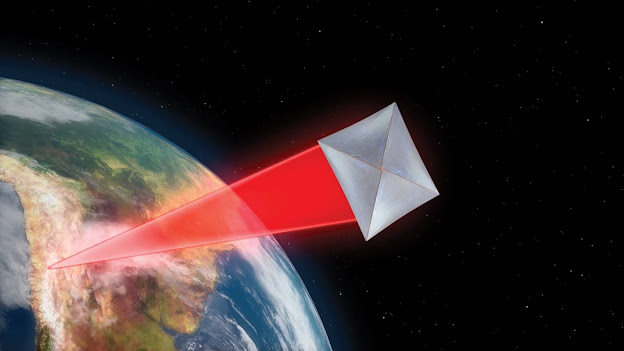Proxima Centauri b
the planet Proxima Centauri b is located 4.244 light years away from the solar system in the constellation of Centaurus. the star system of the planet is closest star system ever been discovered from our sun.

Discovery
Host star of the planet Proxima Centauri b is discover by Robot T.A Innes in 1915.But The first indications of the exoplanet were found in 2013 by Mikko Tuomi of the University of Hertfordshire from archival observation data.To confirm the possible discovery, a team of astronomers launched the Pale Red Dot project in January 2016. On 24 August 2016, the team of 31 scientists from all around the world,led by Guillem Anglada-Escudé of Queen Mary University of London, confirmed the existence of Proxima Centauri b through their research. the planet is discovered by using Doppler spectroscopy method(Radial velocity) from European Southern Observatory(ESO).
HARPS Spectrograph measurements
 |
| image credit:ESO/G. Anglada-Escudé |
The measurements were done using two spectrographs , HARPAS(High Accuracy Radial Velocity Planet Searcher) on the European Southern Observatory(ESO) 3.6m telescope at La Silla Observatory and UVES on the 8-metre Very Large Telescope. The peak radial velocity of the host star combined with the orbital period allowed for the minimum mass of the exoplanet to be calculated.the discovery of the planet is announced on 24 August 2016.the radial velocity of the parent star relative to the Earth is varying with an amplitude of about 1.4 metres per second.in May 2019, a paper presenting recent Spitzer Space Telescope data concluded that Proxima Centauri b does not transits its sun relative to Earth.Data collected with ESPRESSO(Echelle SPectrograph for Rocky Exoplanets and Stable Spectroscopic Observations) excludes the presence of extra companions with masses above 0.6 Earth masses at periods shorter than 50 days.
Parent star(Proxima Centauri)
Hubble Space Telescope 2013 image of Proxima Centauri
 |
| Image credit:NASA,ESA,HST |
The planet Proxima Centauri b orbits M-type red dwarf star Proxima Centauri. radius of the star is 107,280 km.the star is closest star ever been discovered from the sun.the star has mass of 0.1221 solar masses and a radius of 0.14 solar radius.the star has surface temperature of 3042 K which is 47.35% of the surface temperature of the sun.the age of the star is 4.85 billion years while the age of our sun is 4.6 billion years.Proxima Centauri rotates roughly every 83 days and has luminosity about 0.0015 solar luminosity.the star Proxima Centauri is closest to the sun but due to its low luminosity we can't see the star with our naked eye.the star is very rich in metals compared with the sun.Proxima Centauri is a flare star.This means that it undergoes occasional dramatic increases in brightness and high-energy emissions because of magnetic activity that would create large solar storms.in March 2016 a superflare was observed with an energy of 1026.5 joules.which is little brighter than our sun.The surface irradiation was estimated to be 100 times what is required to kill even UV-hardy microorganisms. Based on the rate of observed flares, total ozone depletion of an Earth-like atmosphere would occur within several hundred thousand years.
Characteristics(Proxima Centauri)
 |
| image Credit: ESO /M. Kornmesser |
the radius of the planet Proxima Centauri b is kind of similar to the earth.the radius of the planet is 1.07 earth radius and the mass of the planet is 1.172 earth masses.the planet is not transit its parent star so that its exact radius is unknown.Proxima Centauri b might have an icy composition like neptune, with a thick enveloping, hydrogen and helium atmosphere; the likelihood that this is the case has been calculated to be greater than 10%.the planet Proxima Centauri b is orbit it's star at 0.05 Astronomical unit which is one-twentieth of the distance from the Earth to the Sun.So that orbital period of the planet is only 11.186 earth days.Even though the planet is very close to its host star Proxima Centauri has surface temperature of 234 K somewhat colder than earth's 255 K ,Because of Proxima Centauri b receives about 65% of the amount of radiative flux from its host star that the Earth receives from the Sun.
Can Proxima Centauri support life?
the exoplanet Proxima Centauri b is orbiting within the habitable zone of star Proxima Centauri the region where, with the correct planetary conditions and atmospheric properties, liquid water may exist on the surface of the planet.stellar wind pressure on the planet is more than 2000 times that of the earth.Even though Proxima Centauri is in the habitable zone of its star the planet's habitability has been questioned because of several potentially hazardous physical conditions. The exoplanet is close enough to its host star that it might be tidally locked.in this case one side has permanently night and other has permanently day.this situation rise very extreme condition on the planet's surface.day side is extreme hot and night side has permanent darkness and cold.But don't worry about it scientist is not about this situation on the planet Proxima Centauri b . Proxima b would rotate around its axis approximately every 7.5 Earth days with about 22.4 Earth days elapsing between one sunrise and the next.Proxima Centauri is flare star,so that the flares released by Proxima Centauri could have eroded the atmosphere of the exoplanet. However, if Proxima b had a strong magnetic field, the flare activity of its parent star would not be a problem.
Future mission to Proxima Centauri
(starshot project)
breakthrough Star shot is a research and engineering project by the breakthrough to develop a prof of concept fleet of light sail spacecraft named star chip, to be capable of making the journey to the Alpha Centauri star system 4.37 light-years away. It was founded in 2016 by Yuri Milner, Stephen Hawking and Mark Zuckerberg. this light sail tiny satellite can able to travel 15% to 20% of speed of light.it may be launch by around 2036.






Comments
Post a Comment